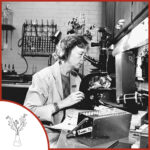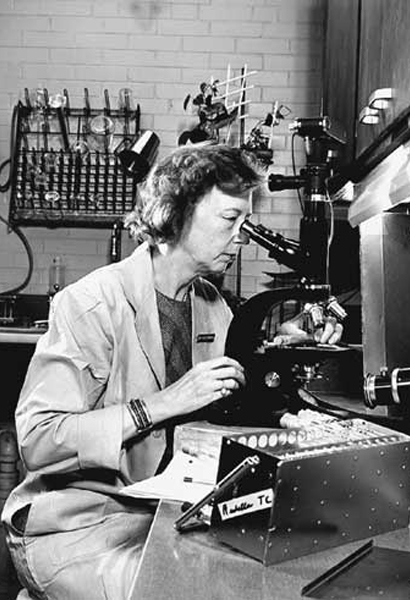

Birth: July 2, 1911
Death: January 11, 2001
Specialty: Epidemiology , virology
Major Contributions:
First woman to hold rank of full professor at Yale University
Part of team that concluded that polio reached the brain by way of the blood
Former President of the Infections Diseases Society of America
Poliomyelitis, more commonly known as polio, plagued humans for many years. First recognized as a distinct condition in 1789, the polio virus that causes the disease was identified in 1909. In the early 20th century outbreaks started occurring more frequently and it was one of the most worrying childhood diseases in Europe and the U.S. It was believed that the polio virus directly attacked the central nervous system until Dr. Dorothy Horstmann made a groundbreaking discovery about the mechanism involved with the spread of Polio in the body.
Others had tested blood from paralyzed patients and couldn’t find the virus, but Horstmann tested the blood of infected animals before the signs of paralysis appeared. What her team found was that the virus could be found in the blood stream, but only until such a time that paralysis developed and by that point antibodies had destroyed the polio virus in the blood. These findings, published in 1952, paved the way for the development of two independently developed vaccines. The World Health Organization asked her to travel to Russia and determine the efficacy of the live-virus polio vaccine being used there. She was able to confirm that the treatment was effective and based on her report the vaccine was licensed in the U.S.
It was after she spent so much time working with children suffering from the effects of polio that Horstmann changed her specialization from internal medicine to pediatrics. Becoming an expert on other childhood and congenital viral diseases, she published research articles about the clinical epidemiology of Rubella, Coxsackie, and Echo viruses. It was her findings on the Rubella virus that proved instrumental in the licensing of the Rubella vaccine for children in the U.S. in 1969.
Spending the majority of her career as a researcher and teacher at the Yale School of Medicine, she was appointed a tenured professor in 1961 and eight years later became the first woman to receive an endowed chair at the school. Horstmann was elected to the United States National Academy of Sciences and served as president of the Infectious Diseases Society of America.
Written by Angela Goad
Sources:
New York Times: Dr. Dorothy Horstmann, 89; Made Strides in Polio Research
NCBI: Putting Together the Pieces of Polio: How Dorothy Horstmann Helped Solve the Puzzle
Polio Place: Dorothy Millicent Horstmann, MD
Wikipedia: Dorothy M. Horstman
See Also:
Yale University: Dorothy Horstmann: Polio Pioneer (YouTube)
Polio Global Eradication Initiative
